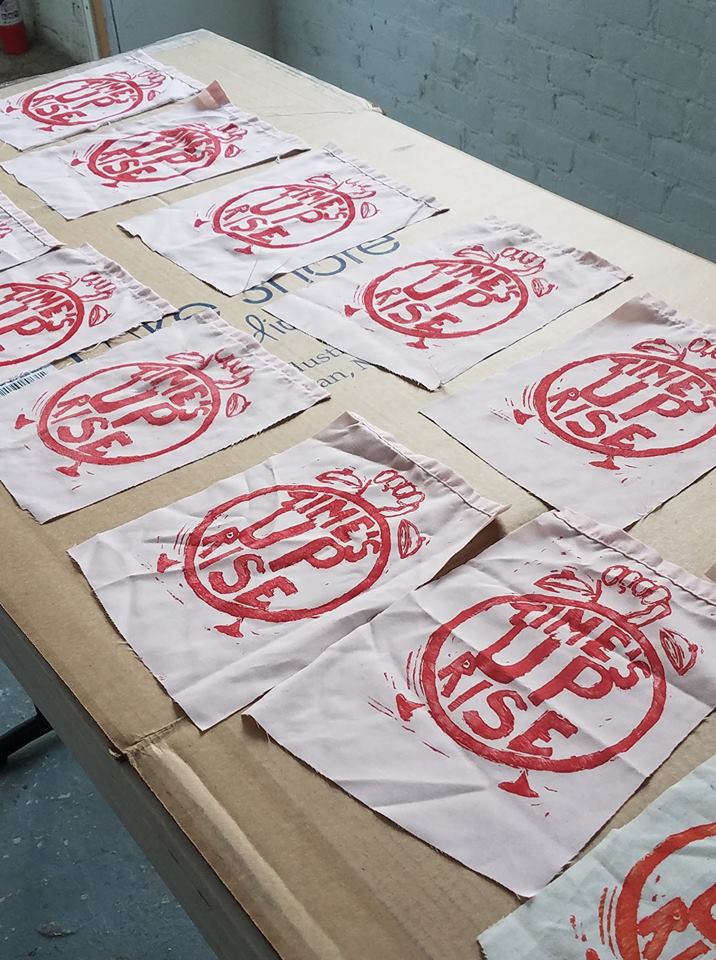Today marks 50 years since the first Earth Day, when some 20 million Americans, or 10% of the country’s population, walked out into the streets, parks, and auditoriums to talk, listen, agitate, worry over, and celebrate our relationship to the planet that had just been seen from space (gracing the cover of the New York Times on Christmas Day) 16 months earlier.
The numbers are a little difficult to pin down, but not too controversial. Historian Adam Rome writes:
"Roughly 1,500 colleges and 10,000 schools held teach-ins. Earth Day activities also took place in churches and temples, in city parks, and in front of corporate and government buildings. The teach-ins collectively involved more people than the biggest civil rights and anti-war demonstrations in the 1960s. […] The first Earth Day had a freshness and intensity that are difficult to imagine today. […] the organizers had to plan everything from scratch, and the effort often was life-changing. Tens of thousands of people spoke on Earth Day — and many had never spoken publicly on environmental issues before. The discussions at Earth Day teach-ins sometimes were soul-searching: Many participants truly were struggling to get to the roots of “the environmental crisis.” (p. x)
All of this was accomplished with a budget of about $125,000. The Guardian’s New York based correspondent wrote,
Nothing like it in war or peace has been seen in this country. Victory parades, Fourth of July marches. and VE night orgies have been more feverish, but as visible expressions of mass sentiment they paled beside the continental scale of this demonstration.
Its success, if measured in terms of the environmental legislation passed in the United States over the next few years, was substantial: the passing of the National Environmental Policy Act (1970), the Clean Air Act (1972), the Endangered Species Act (1973), and at least 25 other pieces of environmental legislation that decade.
Well, here we are, fifty years later, still “struggling to get to the roots of ‘the environmental crisis.’” (Earth Days themselves have come and gone, the largest being the 1990 one in which some 200 million participants in 140 countries took part.)
What we’ve learned on environmental issues over these years has been printed on enough paper to reach the moon and back (that’s a wild guess, but what I’ve read over my years of being a student and scholar of environmental issues goes a long way into the stratosphere, I am sure).
What’s been added to our storehouse of knowledge includes the incontrovertible evidence of anthropogenic climate change (incontrovertible, for most climate scientists, since at least 1988), the practically unanimous agreement that the relationship between humans and the Earth has changed profoundly and irreversibly — enough for geologists, the turtles of the scientific world, to designate our time with the new term “Anthropocene,” and plentiful indicators — in all kinds of places, if you know where to look — that we can resolve many of our ecological problems if we had the political will and institutional capacity to do it, but that we do not currently have either.
We are (some of us) working on it, to be sure. But we are also (many of us) working directly opposed to it. Our work is, let’s just say, cut out for us.
Collectively, the world has been through at least three distinct waves of environmental mobilization worldwide since the 1960s (four if you include the conservation and preservation movements that began in the U.S. in the late 1800s). If the 1970s were the “environmental decade” that resulted from the decade capped by Earth Day 1970, the 1980s were the decade in which reaction consolidated into in a global wave of neoliberal economic policies, spearheaded by the Reagan and Thatcher administrations (and tested earlier in Pinochet’s Chile). Environmentalism got laid by the wayside, with the nuclear standoff between the U.S. and U.S.S.R. looming much more strongly in global focus.
By the late 1980s, however, environmentalism was back on the agenda (thanks to James Hansen and many others) and, with the 1991 Rio Earth Summit, had become clearly global. But the now hegemonic nature of neoliberal economics, combined with the global lease on life it was given by the fall of the Soviet bloc, ensured that “sustainable development” — the new global catchword — would be a compromise between economic development and environmental regulation.
By the 2000s, of course, we get 9-11, the Iraq War, and ultimately the economic crisis of 2008-9, with environmental and climate activism rising again in its third, and most global, wave, but with reaction setting in even more strongly — ultimately with the elections of anti-environmental “illiberal populists” like Trump, Bolsonaro, and others.
Here we are, then, huddling together in our homes in the wake of coronavirus. The world has certainly gotten more feverish, warmed not only by global climate instability with its many attendant risks — intensified fires, storms, floodings, sinkings, and now pandemics — but also by the political and cultural instabilities marking humanity’s response to this interconnected array of strange visitors. COVID-19, as I wrote a few weeks ago, is not exactly a new global actor — viruses and pandemics do come around every so often — so much as it is a variation on a very old global actor, the planetary microbiome that generates the companion species — ‘organisms at the edge of life’ — known as viruses.”
Today (as I watch snowflakes swirling outside my window), we here at the University of Vermont host two major events relating the climate-changed environmental big picture to the ecology of pandemics, habitat loss, and deforestation: EcoCultureLab’s global check-in “When Corona Met Climate Change… What Changed?” at noon EDT, and tropical forest ecologist Nalini Nadkarni’s keynote talk “Disturbance, Recovery, Discovery: Lessons from Tropical Rainforests.” And we follow up tomorrow with Marina Zurkow’s talk (with Una Chaudhuri) exhorting us to “Boil the Ocean!”
We invite you to join us at any or all of these events.




